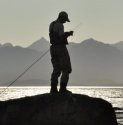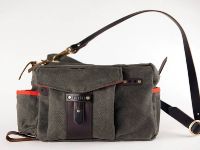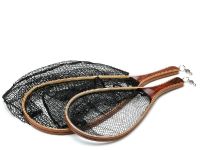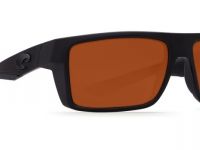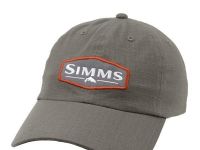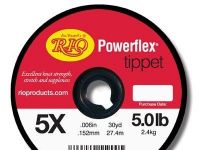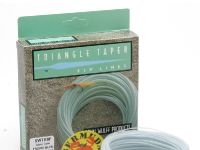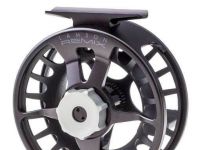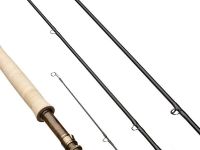We get a lot of emails from anglers that are just getting into fly fishing asking us about the basic setup to get started in the sport. That's why we came up with this short list of essentials. Of course, there are lots of other elements to include as one progresses in fly fishing, but these are the basic tools that will help beginners catch their first fish on the fly.
Rod
There are endless options when it comes to fly rods, but before purchasing one remember to think about matching the line weight you are going to need. Generally, 0 to 2 lines and rods are used for small trout and panfish; 3 to 5 lines and rods for bigger trout, small bass and longer casting distances; 6 and 7 lines and rods for bigger flies and fish as well as tougher wind conditions; 8 to 10 lines and rods are usually used for salmon, pike, steelhead, saltwater fly fishing and big heavy flies; and 11 to 14 lines and rods for heavy saltwater conditions and species, like GTs! Of course, these are just standards and they can change as the angler evolves and can vary according to each moment and spot, but these can be very useful for the ones just getting started in fly fishing.
Here are some rod options:
https://shop.flydreamers.com/rods-c151762
Reel
If you're going for small to medium sized freshwater fish, then your reel is going to have the primary function of holding and administering your line (and backing). Remember, the reel weight should be balanced with the rod; but don't worry, this can be easily achieved as rod and reel manufacturers include this information on their products. Once you go for bigger and stronger fish that take line off your reel, then you're going to need a good drag system that will enable you to stop them.
Checl out the reels on the FD Shop:
https://shop.flydreamers.com/reels-c151765
Line
There is a line for every fly rod and fishing situation, but WF (weight forward) line tapers work perfectly in most situations and are the most popular lines for beginners. The species you go after and the wind conditions will give you a good idea of the line weight you need. Here's a list of lines and information about them:
Some fly line options here:
https://shop.flydreamers.com/fly-lines-c151712
Backing, leader and tippet
Once you have found your line, it's time to get everything together before heading to the casting pond or the river. The backing is a line reserve that becomes very important when fighting strong fish, it is the first line (usually made in materials like Dacron) on the spool. Then comes the line, and then the leader. The leader is the transparent monofilament (or sometimes fluorocarbon) section that follows the line; it is what keeps our fly line from being seen by the fish. The leader length can be varied by adding tippet material (the last section) where we attach the fly.
They all come in different lengths and strengths according to the targeted species:
https://shop.flydreamers.com/leaders-tippet-c151734?q=tippet
Flies
It all depends on the species you will be going after during your early days in fly fishing, but a small selection of classic patterns should be enough to get you started. If you're going for trout, consider taking a small assortment of nymphs, dries and streamers so as to cover the main bases. A good tip: visit your local fly shop to find the hot flies of your area.
Hats
Hats and caps are clearly essentials during our fly-fishing days, they help us see our targets better, sometimes store our flies, protect us from our own flying flies, and also from the harmful sun rays. As you can see on this list, the styles are plenty:
https://shop.flydreamers.com/clothing-c151718?q=cap&q=hat
Sunglasses
Sunglasses provide protection to both beginners and advanced anglers, as defective casts pose a real danger to the eyes. Plus, polarized sunglasses are really helpful to spot fish and avoid our eyes from being fatigued after a long sunny day on the water.
Some cool sunglasses on this list:
https://shop.flydreamers.com/sunglasses-c151716
Accessories
The list of accessories in fly fishing can be overwhelming. There's different kinds of gadgets and tools for all kinds of species, but you don't need much if you're taking your first steps. Some essentials like nippers or clippers, forceps (clamp or hemostat), fly floatant, and a net will make things easier during your first days on the river.
Find the accessories and other tools here:
https://shop.flydreamers.com/fishing-tools-accessories-c151714
Wading Gear
You don't really need waders in order to get your first catch, but if you're planning on giving that step into the water here are some options. Remember that you should take into account the temperature of the water in your area, so as to know what you should wear or not under your waders and boots.
Our wading gear options:
https://shop.flydreamers.com/wading-gear-c151750
Extras
There are other things to take into account during your first fishing outings, such as wearing a vest or a pack, simple rubber boots or waist-waders, taking extra rods with different actions, etc. It's really up to each angler. The important thing is to feel safe and comfortable enough to enjoy your first fly-fishing days on the river!
Here's the link to all the products on the FD Shop: https://shop.flydreamers.com/

